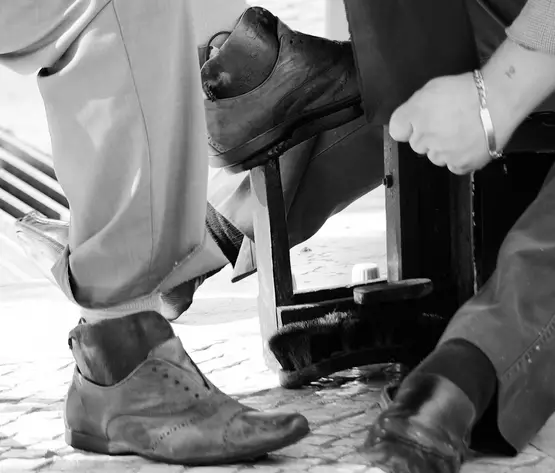Remember those familiar rhythms that shaped our daily lives decades ago? Before smartphones and streaming services dominated our time, families across America shared common daily rituals that bound them together as a unit. While modern conveniences have certainly made our lives easier in many ways, something special has been lost in the transition to our digital, always-connected world.
1. Gathering Around the Radio for Evening Entertainment

Before television gained prominence in American homes, families would gather around the radio in the evening to listen to their favorite programs together. Parents and children would sit in the living room, sometimes with needlework or other quiet activities in hand, absorbing tales from shows like “The Shadow,” “Fibber McGee and Molly,” or “The Lone Ranger.” The radio was often positioned as the centerpiece of the room, much like TVs would later become, creating a focal point for shared family experiences. Radio Connection Broadcast School dives further into the time when this form of entertainment prospered so much, it was known as the Golden Age of Radio.
Radio programs created a unique form of entertainment that required listeners to use their imagination to visualize the characters and settings being described. Network radio entertainment reached its golden age in the 1930s and 1940s, offering everything from comedy and drama to news and musical performances. By the late 1950s, this daily ritual began fading as television sets became more affordable and widespread, permanently changing how families consumed entertainment.
2. Writing and Receiving Personal Letters

Long before email and text messages, people communicated through handwritten letters that required thought, effort, and patience. Families would often set aside time each week to write to distant relatives, catching them up on local news, family milestones, and everyday happenings. Many households maintained a writing desk stocked with stationery, envelopes, stamps, and perhaps a special pen reserved just for correspondence. Verywell Mind goes further and lists ways in which writing letters also had benefits for the mind and body.
Mail delivery was an anticipated daily event, with many rushing to the mailbox to see what news had arrived from loved ones far away. Children would learn the art of letter writing from their parents, practicing penmanship and proper formatting while developing the valuable skill of thoughtful communication. Statistics show that first-class mail volume in the United States has declined by more than 45% since 2000, marking the near extinction of what was once a cherished daily ritual.
3. The Family Dinner Without Distractions

Families once gathered around the dinner table every evening without the interruption of phones, television, or other electronic devices. Dinnertime was sacred, with everyone expected to be present, properly dressed, and ready to engage in conversation about their day. Many families would begin the meal with a prayer or moment of gratitude, establishing a tone of appreciation and togetherness. Psychology Today still touts the vital importance of family dinners, for all members but especially for the youngest generation of the household.
Children were taught table manners and the art of conversation, learning to listen as much as they spoke. Research from the 1950s and 1960s shows that over 90% of American families ate dinner together at least five nights per week, compared to roughly 30% today. Studies consistently show that regular family dinners correlate with better academic performance, lower risk of substance abuse, and healthier eating habits—benefits that many modern families miss out on.
4. Evening Walks After Dinner

Taking a leisurely stroll through the neighborhood after dinner was once a common family activity that provided exercise, fresh air, and community connection. Parents would use this time to socialize with neighbors, while children would play impromptu games with other kids on the block. These walks weren’t tracked by fitness apps or interrupted by work calls—they were simply a chance to digest dinner and transition into evening relaxation. Verywell Health also notes the physical benefits of taking a walk after eating in general.
The ritual created natural opportunities for families to discuss important matters in a low-pressure environment. According to historical accounts and sociological studies, these evening constitutional walks were especially common from the 1920s through the 1960s, particularly in suburban and small-town settings. By the 1980s, increased concerns about safety, longer work hours, and the rise of evening television programming had significantly reduced this practice in American life.
5. Reading the Newspaper Cover to Cover

Before 24-hour news channels and social media feeds, the daily newspaper was the primary source of information about local and world events. Many households had morning routines built around the newspaper—dad might read the front page with his coffee, mom would check the local news, and children might scramble for the comics or sports section. The physical act of passing sections back and forth created small moments of connection and shared discovery.
Newspaper reading taught children the importance of staying informed and exposed them to everything from international politics to local school board decisions. Circulation data shows that in 1950, there were 1,772 daily newspapers in the United States with a combined circulation of 53.8 million—about 123 copies per 100 households. By 2020, those numbers had fallen to less than 1,000 daily papers with a circulation below 25 million, representing the dramatic decline of what was once an essential family ritual.
6. Darning Socks and Mending Clothes

When clothing was more expensive relative to income, families regularly spent time repairing garments rather than replacing them at the first sign of wear. Many households would designate one evening a week as “mending night,” when buttons would be sewn back on, socks darned, and small tears repaired. Children would learn these practical skills from an early age, understanding the value of making things last.
The mending basket was a common household fixture, filled with items waiting for attention and the tools necessary to repair them. According to consumer spending data, the average American household in the 1950s spent approximately 12% of their annual budget on clothing, compared to just 3% today, reflecting our shift to less expensive, disposable fashion. This decline in clothing repair parallels the loss of home economics education in schools, with many young people today lacking basic sewing skills their grandparents took for granted.
7. Polishing Shoes for the Week Ahead

Sunday evenings in many households included the ritual of cleaning and polishing shoes for the upcoming week. Families would gather around newspaper-covered floors, with parents teaching children the proper techniques for maintaining their footwear. The process involved cleaning off dirt, applying polish, buffing to a shine, and sometimes waterproofing—skills that were passed down through generations.
This routine wasn’t just about appearance but also about respecting one’s possessions and making them last longer. Historical consumer data indicates that Americans in the 1940s and 1950s owned fewer pairs of shoes but kept them for much longer, with regular maintenance extending their lifespan significantly. The decline in shoe polishing correlates with the rise of casual footwear, synthetic materials, and our increasingly disposable approach to consumer goods.
8. Hanging Laundry to Dry Outdoors

Before electric dryers became household staples, laundry day involved hanging clothes, sheets, and towels on outdoor lines to dry in the sun and breeze. This task often became a family affair, with children helping to hand clothespins to parents or learning to properly hang smaller items. The fresh scent of sun-dried laundry was a simple pleasure that many still reminisce about today.
Laundry hanging followed specific protocols—sheets and towels on outside lines, undergarments discreetly placed on inner lines, and everything arranged by size for efficiency. According to appliance history data, only 10% of American households owned an electric dryer in 1955, compared to over 80% today, marking one of the most significant shifts in domestic routines. This change has saved countless hours of labor but has also eliminated a task that connected families to natural cycles and outdoor environments.
9. Memorizing Phone Numbers and Addresses

Families once maintained mental catalogs of important phone numbers and addresses, with children expected to memorize grandparents’ phone numbers, their home address, and emergency contacts. Many homes had a phone book by the telephone, with frequently called numbers written inside the cover or on a nearby notepad. This practice was both practical and safety-oriented, ensuring children could reach out for help if needed.
Memory skills were developed through daily reinforcement as people dialed numbers manually rather than tapping stored contacts. Survey data from the 1980s indicates that the average American could recall at least 20 phone numbers from memory, compared to fewer than five today according to recent studies. The smartphone revolution has externalized this knowledge, changing not just our communication habits but the very cognitive skills we exercise daily.
10. Bedtime Stories and Prayers

The nightly ritual of bedtime stories and prayers created predictable transitions from wakefulness to sleep for generations of children. Parents would take turns reading from beloved books, often the same titles their parents had read to them, creating threads of continuity between generations. These quiet moments fostered literacy, imagination, and emotional security while strengthening family bonds.
Many families incorporated religious elements into bedtime routines, with children learning traditional prayers or expressing gratitude for the day’s blessings. According to child development studies from the mid-20th century, consistent bedtime routines were present in over 95% of American households with young children. While reading to children remains valued today, the uninterrupted nature of traditional bedtime routines has been compromised by digital distractions and busier evening schedules.
The daily routines that once structured family life carried more than just practical value—they created predictable rhythms that offered security, taught important life skills, and reinforced family connections. While today’s families have gained convenience through technological advances, many would benefit from reconsidering some of these forgotten practices. Perhaps by mindfully incorporating elements of these traditional routines into our modern lives, we can recapture some of the closeness and intentionality that made family life so meaningful for previous generations.


